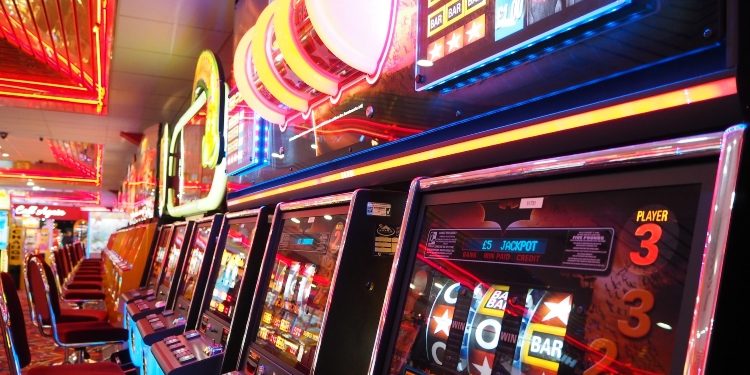Are these slots rigged? is a question that you’ll need to get used to hearing every day if you work in a casino.
Well, yes, but in reality no, is the reply.
The house always has the advantage when playing slots. Return to player (RTP) is the term typically used to define this figure. It displays the average percentage of each dollar wagered that is returned to the player, as the name would imply.
What Keeps Casinos from Hacking Their Machines
The state or nation in which a country casino italia is located has essentially granted it permission to print money.
Casinos won’t be allowed to operate below the minimum RTP or payback amount set by many of these licensing organizations.
A casino that has its slot machines set below the legal minimum paybacks could be subject to hefty fines or even lose its license, not to mention the risk to its reputation among players.
Nobody will want to play at a casino that has been defrauding its patrons.
Any unusual variations in revenue outside of what is expected will prompt regulators to inspect slot machines and their CPUs for irregularities. State or tribal agencies closely monitor all the revenue in casinos to ensure that they receive their fair share of taxes.
The majority of these jurisdictions disperse their RTP monthly, frequently by region and occasionally by particular casino.
A savvy slot player can see not only the differences in payouts between various properties but also the various RTPs by bet denomination within those properties in these situations.
Even though not all states or tribal venues will have a minimum RTP requirement, there are still two other factors that prevent operators in these locations from tightening their machine settings.
First, there is gambling psychology.
Players anticipate spending a certain amount of time on a machine and getting value for their money spent gambling.
The longer they keep slot players in those chairs, the more money they will make, and the happier their patrons will be, a good casino operator will know, whether or not they are constrained by the law.
The other limiting factor, which is free market competition, goes hand in hand with this.
Players will vote with their feet and move to a location that offers a higher RTP if they feel they aren’t getting the best value for their slot machine budget at the current location.
If they set their payback prices too low, casinos with little local competition risk losing patronage to Las Vegas or other more developed regional markets.
RTP rates in Nevada range from 90% to 94%, despite the state’s fierce competition.
RTP rates in Maine range from 89% to 94%, despite the state’s two casinos and distance from other casino markets.
This illustrates the need for reasonable pricing in even somewhat isolated markets.
Why all of the myths you’ve heard about slots are just that: myths
The slot machine community has long held the view that payback rates on machines vary significantly depending on where they are located.
For instance, many slot players vouch that the machines near the lobby or the casino cage pay out better because the casino wants players to see and hear winners.
Furthermore, as a result of the casino’s expectation that it can draw more casual players who play for a short period of time, machines near table games or the buffet line will have lower RTP figures.
In fact, if you ask a dozen devoted slot players, you’ll get a dozen different PhD theses on the placement and payback percentages of slot machines.
What is the reality, though?
Although there isn’t much historical information available, it is certain that casino managers from 50 years ago placed slot machines in various locations and at different payout levels based on their own assumptions about what would encourage more play and higher hold percentages.
But compared to today, even a small casino – like https://kodybonusowe.net/casino/energy-casino/ – has more than 1,000 machines. These early slot forecasters frequently dealt with just 100 or so machines. as many as 4,000 in some cases.
While some of these machines may offer different pay tables, the majority will typically just have the same payout as the rest of the casino’s machines because they are typically ordered in bulk.
There is no difference of 1% between the games at the end caps and those in the middle of the aisle.
The majority of slot directors I’ve spoken with today are far too busy to worry about placing specific machines based on even a small difference in RTP.
The location of certain banks of slots in high-traffic areas may vary, but this is much more likely to depend on the amount of play than on the house advantage.
They will order the machines with the pay tables that will enable them to reach their target RTP for, say, all penny slots.
Another factor in this is regulation. The minimum payout for penny slots in some of the jurisdictions where I spoke with slot managers was already set at 86% return to player.
There was literally nothing in the casino with a penny denomination that paid much more than that.
Since nearly every machine was within a percentage point or two of the others, they couldn’t really change machine location based on payback.
Additionally, the majority of casinos maintain a reasonably tight spread between the payouts for their highest denomination games and their lowest value games.
While some ultra-high denomination slots fall outside of this range, the average payback on a high denomination game compared to a penny slot is roughly 5%.
However, it’s a long shot to think that the typical gambler will even notice if there is a significant enough percent difference between machines at various locations.
It’s probably best to focus more on whether you’ll have to wait in line for 30 minutes to get your change because that’s what the ticket redemption machine will make you worry about.
David Prior
David Prior is the editor of Today News, responsible for the overall editorial strategy. He is an NCTJ-qualified journalist with over 20 years’ experience, and is also editor of the award-winning hyperlocal news title Altrincham Today. His LinkedIn profile is here.













































































